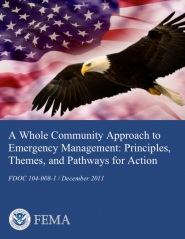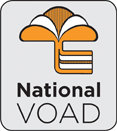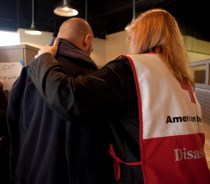Onward with the Disaster Myth Buster Series! Myth #2 is: “Disaster response and recovery is solely a governmental responsibility”
Valerie Lucus-McEwen recently quoted FEMA Deputy Administrator, Richard Serino, in her blog, saying that upon visiting Joplin, Missouri, the media asked Mr. Serino “‘Can FEMA handle this disaster?’ His response: ‘If we were doing this alone – no, we couldn’t.'”
 “Whole Community” Approach Includes Volunteer Organizations
“Whole Community” Approach Includes Volunteer Organizations
Mr. Serino wasn’t being modest. Simply, the Federal government is not designed, nor able, to perform comprehensive response and recovery operations in a vacuum. FEMA’s “Whole Community” approach is the codification of the reality that the government is a partner in, not the sole proprietor of, disaster response and recovery. As David Kaufman, director of FEMA’s Office of Policy and Program Analysis, recently wrote in FEMA’s blog, “Woven throughout the [Whole Community approach] and supported by several examples are three key Whole Community principles that emerged through the national dialogue: [1]understand and meet the actual needs of the whole community; [2] engage and empower all parts of the community to define their needs and [3] provide ways to meet them; and strengthen what already works well in communities on a daily basis to improve resiliency and emergency management outcomes.”
For the longest time, FEMA’s role was binary: disaster relief funding and technical assistance. Meaning, following a disaster declaration, FEMA would implement its program for funding relief (primarily through Public Assistance and Individual Assistance). As needed, FEMA could also call on partner Federal agencies to provide technical assistance, such as engineers from the US Army Corps of Engineers or livestock specialists from the USDA. With programs like Project Impact and Whole Community, FEMA is providing more than just a checkbook or a phonebook. FEMA is acknowledging a deeper role as a facilitator, coordinator, and partner to states, tribes, communities, and the private sector. By “winning hearts and minds” at the local level, FEMA benefits from a “force multiplier” effect.
 Volunteer Organizations Active in Disasters
Volunteer Organizations Active in Disasters
While many people recognize the American Red Cross, there are dozens of other hardworking volunteer organizations present in the disaster response and recovery arena. In fact, together these organizations are referred to as “Volunteer Organizations Active in Disaster” or VOAD. VOAD are so important to FEMA that Mr. Fugate spoke at the National VOAD conference in May 2010, explaining that “It’s the faith-based and non-profit groups that know their communities best, and by strengthening the partnerships between us, we can help keep the people we serve safe.”
Ben Curran, the voluntary agency coordinator at FEMA (and having served FEMA since 1989), released a list of reasons why VOAD are so important and uniquely helpful as a complement to Federal disaster response/recovery. Here are several selected bullet points:
- VOAD is a “go-to” institution at the national and State levels where new organizations learn how to get involved in emergency management.
- VOAD can be innovative, creative, flexible, and pro-active when government often cannot be.
- VOAD organizations are trusted in the community they serve, providing for year-round social needs, and as a result may be able to address problems more thoroughly than government can.
- VOAD diversity sets an example for FEMA, compelling FEMA’s work with all faiths and secular groups — large, small, urban, and rural.
- VOAD serves as a voice to FEMA for the country’s very diverse NGO community.
- VOAD members serve undocumented households during disasters and all communities in non-Presidentially declared disasters – two major gaps not addressed by government
- State VOAD representatives in State Emergency Operations Centers can play key partnering roles for government through extensive networks and collective influence.
- State VOADs greatly assist the FEMA VAL in the early stages of a disaster operation with State introductions, contacts, networks, and historical experience.
- National VOAD provides key input into strategic planning development for FEMA. For example, the National Disaster Housing Strategy.


Excellent write up, and certainly hit the nail on the head! Too often, the public try and privatize public gains and make public losses such as disaster. Collective responsibility is the only way we can truly meet the humanitarian needs of communities impacted by disaster.